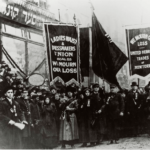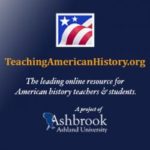Share My Lesson has curated a collection of free lesson plans, activities, and resources to help teachers explore labor history with their K-12 students. Students will learn about the meaning of Labor Day, labor history, how Labor Day got its name, how labor unions work, and how labor unions have impacted the course of history.
Constitutional Index – State of the Union Clause
The Constitutional Index breaks down the U.S. Constitution by Section, Amendment, and Clause and contains broader topics and themes. These are used to cross-reference Library resources in an effort to annotate constitutional history.
America and Red Scare
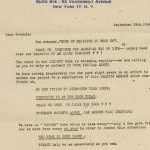
The Cold War was sparked by the immediate aftermath of World War II. The Allied Forces were divided by ideology and quickly separated into two camps: the Western democracies, led by the United States, and the Communist nations, dominated by the Soviet Union. This alignment served as the basic framework of the Cold War over the next fifty years, from 1947-1991. As America positioned itself in opposition to totalitarian regimes, American citizens were forced to confront realities of what “freedom” meant, or should mean.
“Corner Stone” Speech
This speech was delivered in Savannah after Georgia and six other states had seceded from the Union but before hostilities had begun with the Confederate assault on Fort Sumter. Stephens lauded the Confederate states for rejecting the radical theories of Thomas Jefferson and the American founders and establishing instead, for the first time in history, a government resting upon the self-evident truth of racial inequality.
South Carolina Declaration of Causes of Secession
James Madison and the Constitution
In his essay “James Madison and the Constitution,” Professor Jack Rakove probes the mind of James Madison — the delegate known as the “architect of the Constitution,” explores the weaknesses of the Articles government, and develops arguments for a stronger union in a memorandum entitled Vices of the Political System of the United States. Free registration for students and teachers required to access resource.
Lesson 1: Anti-federalist Arguments Against “A Complete Consolidation”
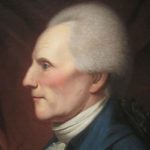
This lesson focuses on the chief objections of the Anti-federalists, especially The Federal Farmer (Richard Henry Lee), Centinel, and Brutus, regarding the extended republic. Students will become familiar with the larger issues surrounding this debate, including the nature of the American Union, the difficulties of uniting such a vast territory with a diverse multitude of regional interests, and the challenges of maintaining a free republic as the American people moved toward becoming a nation.
The Acts of Congress
George Washington’s copy of the Acts passed at a Congress of the United States of America (New-York, 1789) contains key founding documents establishing the Union: the Constitution, the Bill of Rights, and a record of acts passed by the first Congress. In the margins, Washington wrote “President,” “Powers,” and “Required,” underscoring the responsibilities of the first Chief Executive. Learn more about this rare volume in the Fred W. Smith National Library for the Study of George Washington.
James Madison and the Constitution
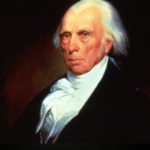
This video highlights James Madison’s talents both as a creative thinker as well as someone with practical experiences in governing. Madison was the longest-lived of the Founding generation and had years after ratification to think about what it takes to make a Constitution work. Professor Jack Rakove notes that Madison lived long enough to hear questions raised about the Constitution’s origins (we, the people? Or we, the states?) and to anticipate the dissolution of the union he created.
